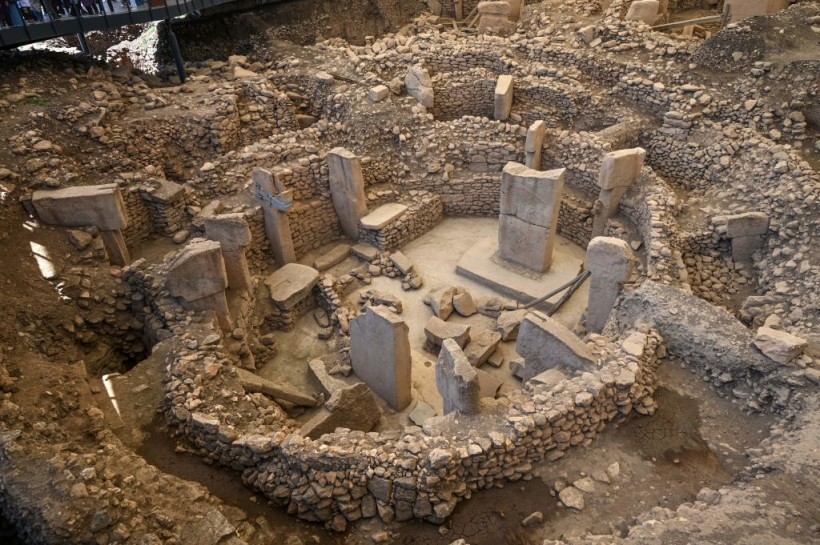The British Museum shared in a recent presentation that archaeologists have discovered the remnants of a 4,500-year-old Sumerian temple in Iraq. It is a temple dedicated to Ningirsu, the Mesopotamian deity of springtime thunder.
The finding is the outcome of the 2015 archaeological partnership led by the British Museum and supported by the Getty Museum called the Girsu Project.

A picture taken on May 18, 2022 shows pillars at the archaeological site of Gobekli Tepe in Sanliurfa, Turkey.
Remains of the Ancient City of Girsu
The long-lost Sumerian temple was constructed with mud brick, and it served as the stunning centerpiece of the ancient city of Girsu, which is now known as the archaeological site Tello.
British Museum lead archaeologist Sebastien Rey, the curator of ancient Mesopotamia in the museum, said during the presentation of findings that they found one of the most important sacred spaces in all ancient Mesopotamia at the heart of Girsu.
They are continuing their excavation project, but they believe that the ancient city of Girsu was a bustling cultural center at the heart of Mesopotamia, a broad area between the Euphrates and Tigris rivers that include Iraq, eastern Syria, southeastern Turkey, as well as a part of western Iraq and Kuwait.
Scientists argue that the Sumerians could possibly be the oldest civilization in the world and the first to establish a code of law and their own religion, as per Live Science.
Ernest de Sarzec, a French archaeologist who originally found the remnants of Girsu in 1877, took all the items he could locate, including a 4,000-year-old statue of the Sumerian king Gudea, who controlled the city at the end of the third millennium B.C. Due to that, many assumed there was nothing more to excavate, which resulted in conflicts that thwarted experts from visiting the location.
Rey said that the site of Girsu fell into semi-oblivion after World War II and the years of conflict. Today, Girsu is considered to be one of the most important heritage sites in the world that only a few people know about. Over a century later, archaeologists unearthed the cast Sumerian temple using remote sensing techniques to reveal the features of the temple buried under the sand.
READ ALSO: Sumerian Tubes First Thought as Scepters Confirmed as Ancient Straws for Drinking Beer
Long-lost Sumerian Temple at the Center of Girsu
Rey said that they were able to uncover a large area of Girsu after five seasons of excavation. Live Science reports that the archaeologists found the inner sanctum, a ceremonial square, an interior wall with a gate, as well as an enclosure wall of the religious complex.
The long-lost temple was referred to as its ancient inscription, which read Enninu or the "White Thunderbird." The temple housed the statue of the hero thunder god named Ningirsu. As per the British Museum, the Sumerians believe Ningirsu possessed the power of spring thunder, rainstorms, and flood, and could command the plowing of the land.
The newly unearthed walls perfectly match a map carved into King Gudea's structure that they found during the early days of their excavation. Rey noted that Enninu is the oldest temple they found with detailed inscriptions that allowed them to test their theory.
RELATED ARTICLE: Aerial Shots of Early Mesopotamian City Show Marsh Islands Thrived Nearly 5,000 Years [Look]
Check out more news and information on Archaeology in Science Times.














